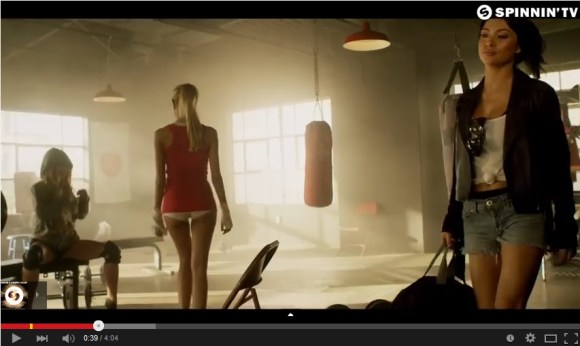
Dutch house producer R3hab and KSHMR have joined vowel-hating forces to lay down their newest single “Karate.” Its pulsing beats have been well received by house music fans and selling copies fast. But as we can see from the image above, there’s something else about “Karate” that is getting people’s attention and over 5 million views on YouTube.
That’s right! It has a lot to teach us about the world-famous martial art it’s named after. I guarantee even the most experienced karateka will learn something new from this video, so be sure to watch and study every scene very carefully.
The video opens with the kanji for “karate” and is followed by dozens of scenes showing people holding several types of weapons.
You might think that with the kanji translating to “empty hand,” weapons would have no place. Actually, it’s said that the “empty” is meant to refer to the practitioner’s mind so that they may use their skills justly, rather than the open hands that they may use to strike.
Going back further, the original kanji for karate was 唐手 meaning “Tang (Dynasty) hand” pointing to the era of China where the roots of modern Japanese karate began. The kanji was later changed to erase Chinese connection with the art during one of the nations’ many periods of heightened tensions.
▼ “Even a karateka has enough sense to know when you’re going into a real fight, it wouldn’t hurt to have some rings of death on you.”
From there the music video demonstrates the traditional part of training known as junbishi hajimeru or “start getting ready” in English.
You see, in real karate one actually begins to get ready only when they’re halfway through training. This is something your dojo is probably scared to teach you as it involves a lot of boxing practice, gymnastics rings, and doing push-ups with your knees on the ground and one hand on a ball.
To stay properly hydrated a karateka must not drink directly from a container. At least an inch of space must be left so that the chi of other fighters may enter it. You also should not actually drink the water. Instead pour it onto your chin so that the water may drink of you.
Finally we reach the post-training ritual of henshitsusha shauwa where karateka celebrate the end of a successful training session by gently caressing each other in a grimy shower room.
Traditionally this was an act performed exclusively by male fighters but as we can see women have recently been allowed to do it as well.
Overall, the “Karate” video has shown the great strides women in martial arts have made and I think we can all agree it has really achieved a victory for feminism in general. Otsukare samadeshita R3hab and KSHMR, or should I say “0tskr3 SMDSHT!”
If you like Karate purchase the track from beatport and support the artists
Source: YouTube – Spinnin’ Records, Kotaku (Japanese)

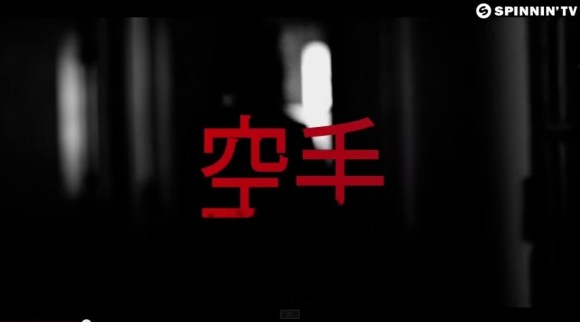
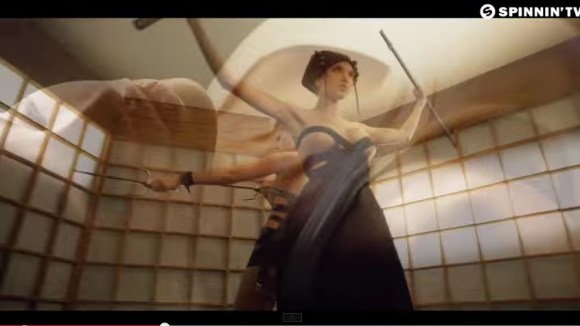
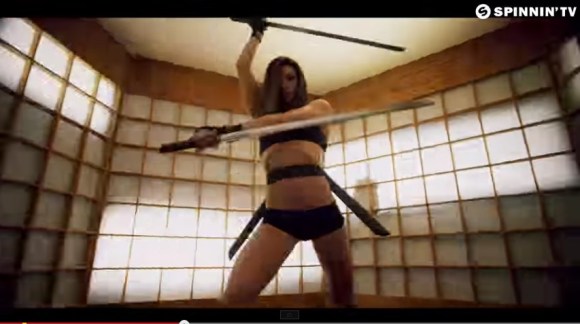
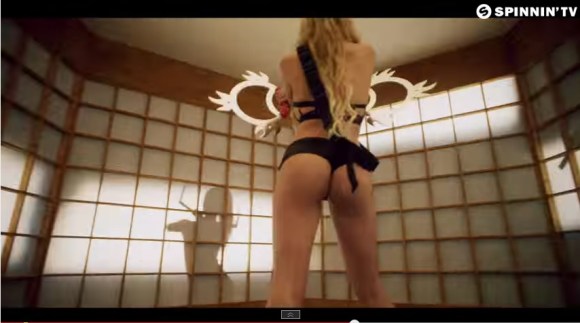
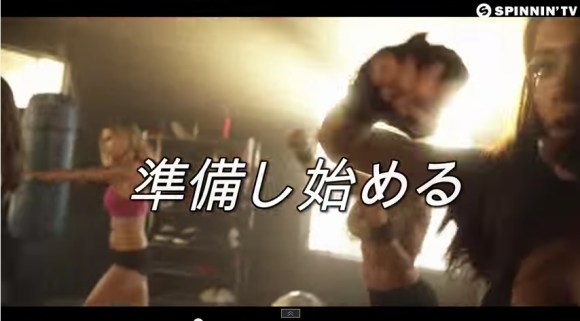
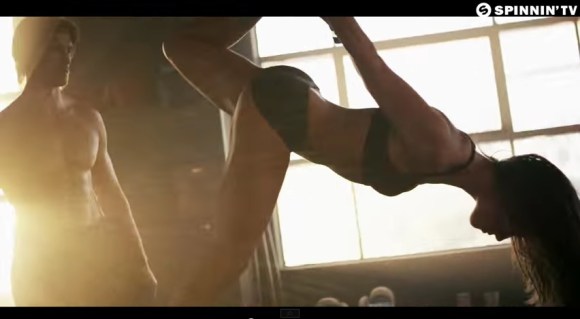
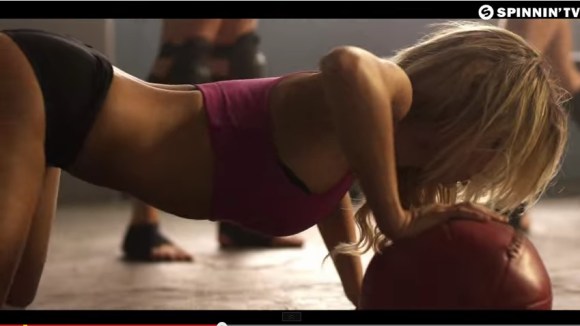
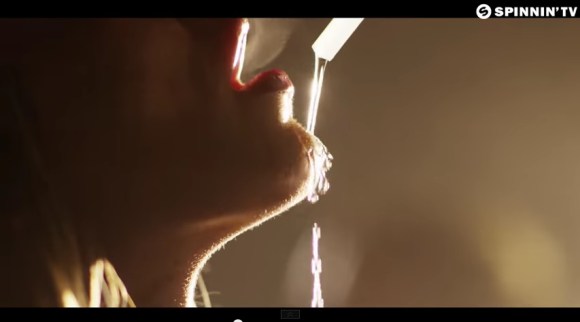

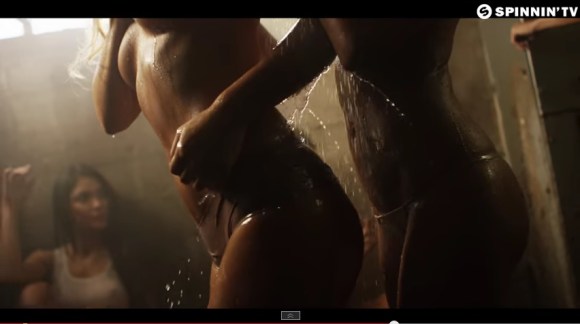
 5 Japanese women who can kick your ass (in martial arts)【Women in Japan Series】
5 Japanese women who can kick your ass (in martial arts)【Women in Japan Series】 68-year-old karate master fights off bear…if you take his word for it
68-year-old karate master fights off bear…if you take his word for it New BABYMETAL song debuts on BBC, immediately shoots to the top of iTunes charts【Music】
New BABYMETAL song debuts on BBC, immediately shoots to the top of iTunes charts【Music】 Babymetal debuts music video “The One”, featuring English lyrics and giant fox heads
Babymetal debuts music video “The One”, featuring English lyrics and giant fox heads The Japanese language has a special honorific suffix just for talking to athletes
The Japanese language has a special honorific suffix just for talking to athletes McDonald’s new Happy Meals offer up cute and practical Sanrio lifestyle goods
McDonald’s new Happy Meals offer up cute and practical Sanrio lifestyle goods All-you-can-drink Starbucks and amazing views part of Tokyo’s new 170 meter-high sky lounge
All-you-can-drink Starbucks and amazing views part of Tokyo’s new 170 meter-high sky lounge More foreign tourists than ever before in history visited Japan last month
More foreign tourists than ever before in history visited Japan last month Starbucks reopens at Shibuya Scramble Crossing with new look and design concept
Starbucks reopens at Shibuya Scramble Crossing with new look and design concept Beautiful Sailor Moon manhole cover coasters being given out for free by Tokyo tourist center
Beautiful Sailor Moon manhole cover coasters being given out for free by Tokyo tourist center The oldest tunnel in Japan is believed to be haunted, and strange things happen when we go there
The oldest tunnel in Japan is believed to be haunted, and strange things happen when we go there Arrest proves a common Japanese saying about apologies and police
Arrest proves a common Japanese saying about apologies and police Mister Donut ready to make hojicha dreams come true in latest collab with Kyoto tea merchant
Mister Donut ready to make hojicha dreams come true in latest collab with Kyoto tea merchant Our reporter takes her 71-year-old mother to a visual kei concert for the first time
Our reporter takes her 71-year-old mother to a visual kei concert for the first time Studio Ghibli glasses cases let anime characters keep an eye on your spectacles
Studio Ghibli glasses cases let anime characters keep an eye on your spectacles Disney princesses get official manga makeovers for Manga Princess Cafe opening in Tokyo
Disney princesses get official manga makeovers for Manga Princess Cafe opening in Tokyo We try out “Chan Ramen”, an underground type of ramen popular in the ramen community
We try out “Chan Ramen”, an underground type of ramen popular in the ramen community Beautiful new Final Fantasy T-shirt collection on the way from Uniqlo【Photos】
Beautiful new Final Fantasy T-shirt collection on the way from Uniqlo【Photos】 Foreign English teachers in Japan pick their favorite Japanese-language phrases【Survey】
Foreign English teachers in Japan pick their favorite Japanese-language phrases【Survey】 Is the new Shinkansen Train Desk ticket worth it?
Is the new Shinkansen Train Desk ticket worth it? There’s a park inside Japan where you can also see Japan inside the park
There’s a park inside Japan where you can also see Japan inside the park Japanese convenience store packs a whole bento into an onigiri rice ball
Japanese convenience store packs a whole bento into an onigiri rice ball Studio Ghibli releases Kiki’s Delivery Service chocolate cake pouches in Japan
Studio Ghibli releases Kiki’s Delivery Service chocolate cake pouches in Japan Japan’s bone-breaking and record-breaking roller coaster is permanently shutting down
Japan’s bone-breaking and record-breaking roller coaster is permanently shutting down New definition of “Japanese whiskey” goes into effect to prevent fakes from fooling overseas buyers
New definition of “Japanese whiskey” goes into effect to prevent fakes from fooling overseas buyers Foreign passenger shoves conductor on one of the last full runs for Japan’s Thunderbird train
Foreign passenger shoves conductor on one of the last full runs for Japan’s Thunderbird train Our Japanese reporter visits Costco in the U.S., finds super American and very Japanese things
Our Japanese reporter visits Costco in the U.S., finds super American and very Japanese things Kyoto bans tourists from geisha alleys in Gion, with fines for those who don’t follow rules
Kyoto bans tourists from geisha alleys in Gion, with fines for those who don’t follow rules Studio Ghibli unveils Mother’s Day gift set that captures the love in My Neighbour Totoro
Studio Ghibli unveils Mother’s Day gift set that captures the love in My Neighbour Totoro Domino’s Japan now sells…pizza ears?
Domino’s Japan now sells…pizza ears? New Japanese KitKat flavour stars Sanrio characters, including Hello Kitty
New Japanese KitKat flavour stars Sanrio characters, including Hello Kitty Sales of Japan’s most convenient train ticket/shopping payment cards suspended indefinitely
Sales of Japan’s most convenient train ticket/shopping payment cards suspended indefinitely Sold-out Studio Ghibli desktop humidifiers are back so Totoro can help you through the dry season
Sold-out Studio Ghibli desktop humidifiers are back so Totoro can help you through the dry season Japanese government to make first change to romanization spelling rules since the 1950s
Japanese government to make first change to romanization spelling rules since the 1950s Ghibli founders Toshio Suzuki and Hayao Miyazaki contribute to Japanese whisky Totoro label design
Ghibli founders Toshio Suzuki and Hayao Miyazaki contribute to Japanese whisky Totoro label design Doraemon found buried at sea as scene from 1993 anime becomes real life【Photos】
Doraemon found buried at sea as scene from 1993 anime becomes real life【Photos】 Tokyo’s most famous Starbucks is closed
Tokyo’s most famous Starbucks is closed One Piece characters’ nationalities revealed, but fans have mixed opinions
One Piece characters’ nationalities revealed, but fans have mixed opinions We asked a Uniqlo employee what four things we should buy and their suggestions didn’t disappoint
We asked a Uniqlo employee what four things we should buy and their suggestions didn’t disappoint Princesses, fruits, and blacksmiths: Study reveals the 30 most unusual family names in Japan
Princesses, fruits, and blacksmiths: Study reveals the 30 most unusual family names in Japan Studio Ghibli’s new desktop Howl’s Moving Castle will take your stationery on an adventure
Studio Ghibli’s new desktop Howl’s Moving Castle will take your stationery on an adventure Beautiful, ferocious karate champion Rika Usami wants you to eat your mushrooms in new commercial
Beautiful, ferocious karate champion Rika Usami wants you to eat your mushrooms in new commercial Karate dojo students practice under freezing waterfall… in the middle of winter
Karate dojo students practice under freezing waterfall… in the middle of winter If The Avengers could have one Japanese superhero, who would it be?
If The Avengers could have one Japanese superhero, who would it be? Japanese schoolgirl and karate teen subdue violent shoplifter
Japanese schoolgirl and karate teen subdue violent shoplifter Travelers can destroy roof tiles with martial arts strikes at new business in Tokyo【Videos】
Travelers can destroy roof tiles with martial arts strikes at new business in Tokyo【Videos】 Beautiful Japanese martial artist recreates fighting video game moves in the real world【Video】
Beautiful Japanese martial artist recreates fighting video game moves in the real world【Video】 Japanese company makes virtual shadow boyfriends to help protect women who live alone【Videos】
Japanese company makes virtual shadow boyfriends to help protect women who live alone【Videos】 Young martial artist slices through the competition, takes the internet by storm
Young martial artist slices through the competition, takes the internet by storm Brave, pint-sized warrior almost loses his epic battle with a board
Brave, pint-sized warrior almost loses his epic battle with a board Martial arts “master” demonstrates his incredible technique, leaves us laughing
Martial arts “master” demonstrates his incredible technique, leaves us laughing Japanese study tip: Imagine kanji characters as fighting game characters, like in this cool video
Japanese study tip: Imagine kanji characters as fighting game characters, like in this cool video Planning to propose to a Pokémon fan? They’ll love this gorgeous Mew engagement ring
Planning to propose to a Pokémon fan? They’ll love this gorgeous Mew engagement ring Who are you calling “cute”!? 7-year-old karate master will destroy you【Video】
Who are you calling “cute”!? 7-year-old karate master will destroy you【Video】 Babymetal’s new album, Metal Resistance, is out now and it’s awesome
Babymetal’s new album, Metal Resistance, is out now and it’s awesome Millennia of martial arts wisdom distilled in one video: 100 Ways to Attack the Groin
Millennia of martial arts wisdom distilled in one video: 100 Ways to Attack the Groin
Leave a Reply